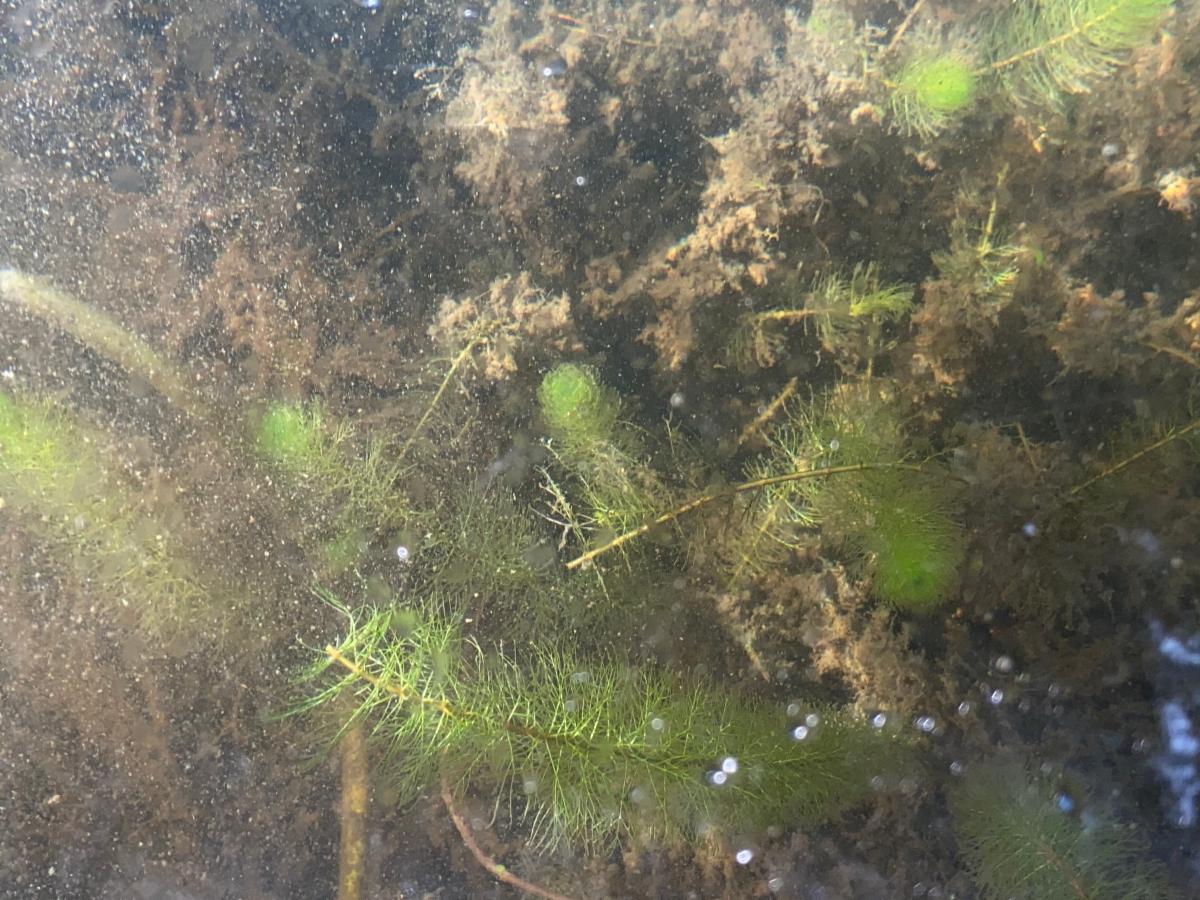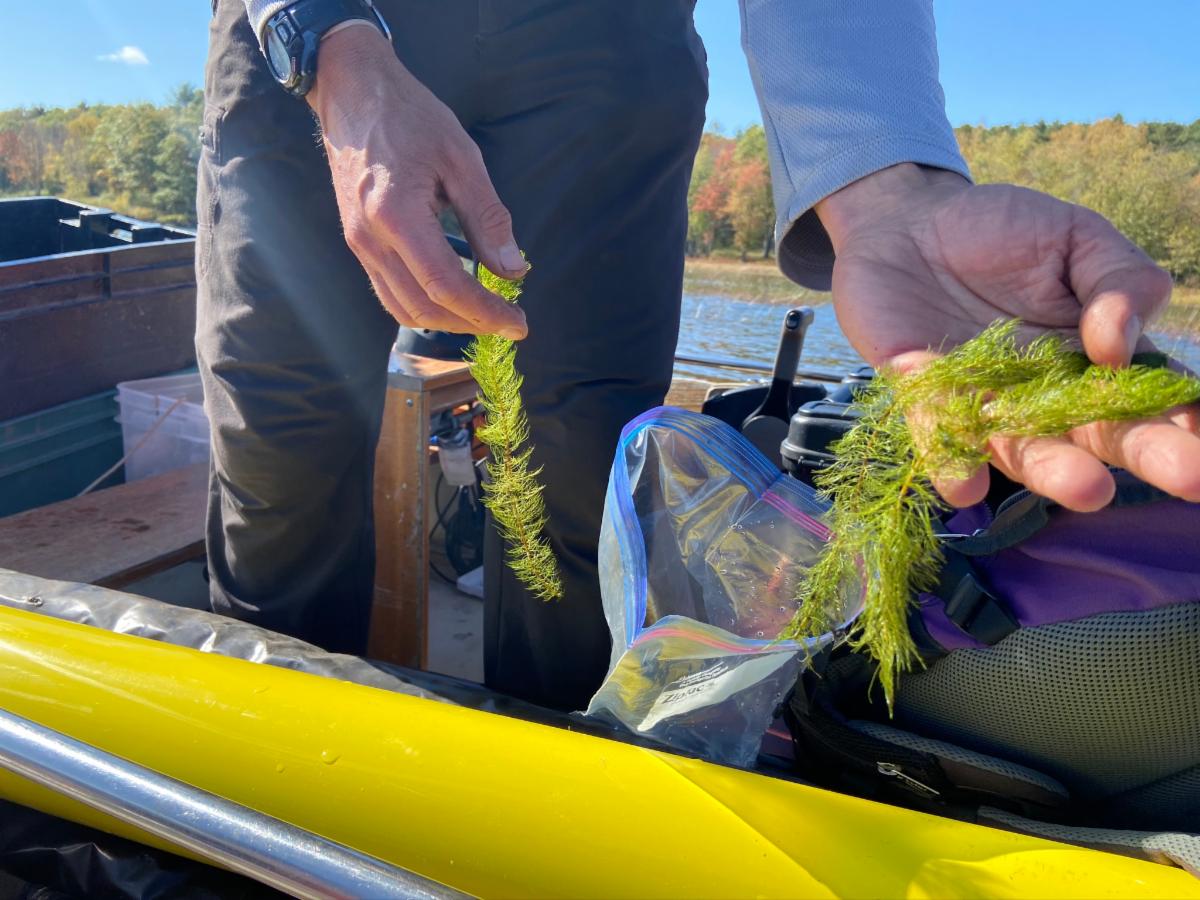In early September, a volunteer “plant patroller” on Androscoggin Lake, Katherine Mahoney, collected a suspicious aquatic plant from the Inner Cove at the northern end of the lake, 400 yards north of the state boat launch. Because the plant was a milfoil and we could not rule out the invasive types, it was sent in for DNA testing. At the end of September, the results came back: It was variable water-milfoil, Myriophyllum heterophyllum, an invasive species.
This is the first time an invasive aquatic plant has been found anywhere in the 30 Mile River watershed and poses a serious threat to not only Androscoggin Lake, but to other lakes and ponds in the watershed and beyond. Invasive milfoil can devastate a lake. Once it takes hold, it can strangle portions of that lake, pushing out native plants and other organisms, changing natural habitat, and making it difficult or impossible in many places for swimming, boating, fishing, and other recreational activities. This typically results in a drop in property values around that lake, which has a ripple effect on the economies and businesses of surrounding towns.
Because invasive milfoil grows and spreads rapidly, identifying infested areas early and implementing aggressive, immediate control efforts are critical and provide our best hope. Upon learning the DNA results, 30 Mile immediately went to work with the Androscoggin Lake Improvement Corporation (ALIC), the Maine Department of Environmental Protection (DEP) and the Lake Stewards of Maine (LSM) to organize a rapid response.
Through this important collaborative effort, on October 3rd we were able to successfully deploy an early response team of 17 trained plant patrollers (see photo above) – 15 volunteers and 2 staff from 30 Mile and LSM – to survey both the Inner Cove and the Androscoggin Yacht Club basin. Volunteers came not only from Androscoggin Lake’s plant patrol team, but from teams on Flying Pond, Lovejoy Pond, Parker Pond and beyond. Towards the end of the day, surveyors found a patch of variable milfoil about 12 feet in diameter, in water 3 feet deep, 100 feet south of where the original plant was found.
On October 5th, Lidie Robbins of 30 Mile returned to the cove with DEP staff. A DEP diver (photo right) carefully removed by hand all of the invasive milfoil that could be found in that area. On October 15th, a team from LSM, 30 Mile and the DEP surveyed the cove again and found four additional clusters of plants, which will be removed within a few days.
Beginning in the spring of 2021, ALIC and 30 Mile will conduct repeated surveys of both the cove and all other littoral zones of the entire lake, and will organize plant removal work as necessary. We will need additional help and plant patrol volunteers to make this effort a success. 30 Mile will also be working with volunteers across the watershed to ramp up surveys of other lakes and ponds. If you are interested in becoming a volunteer plant patroller, please contact lidie@30mileriver.org. Stay tuned for more information and ways you can get involved.



